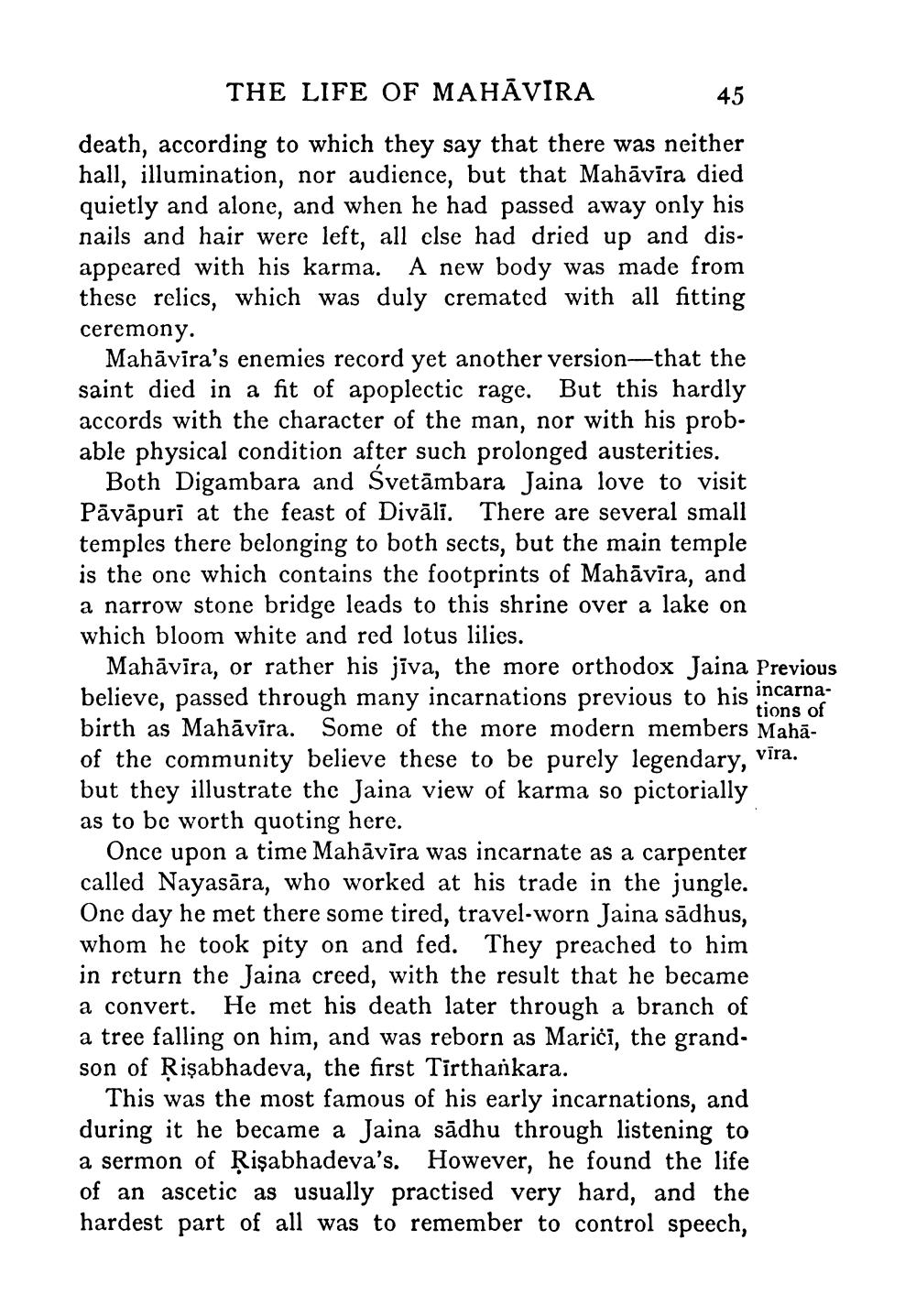________________
THE LIFE OF MAHĀVIRA
45
death, according to which they say that there was neither hall, illumination, nor audience, but that Mahāvīra died quietly and alone, and when he had passed away only his nails and hair were left, all else had dried up and disappeared with his karma. A new body was made from these relics, which was duly cremated with all fitting ceremony.
Mahāvīra's enemies record yet another version—that the saint died in a fit of apoplectic rage. But this hardly accords with the character of the man, nor with his probable physical condition after such prolonged austerities.
Both Digambara and Svetāmbara Jaina love to visit Pāvāpuri at the feast of Divāli. There are several small temples there belonging to both sects, but the main temple is the one which contains the footprints of Mahāvīra, and a narrow stone bridge leads to this shrine over a lake on which bloom white and red lotus lilies.
Mahāvira, or rather his jīva, the more orthodox Jaina Previous believe, passed through many incarnations previous to his incarna:
tions of birth as Mahāvīra. Some of the more modern members Mahāof the community believe these to be purely legendary, vīra. but they illustrate the Jaina view of karma so pictorially as to be worth quoting here.
Once upon a time Mahāvīra was incarnate as a carpenter called Nayasāra, who worked at his trade in the jungle. One day he met there some tired, travel-worn Jaina sādhus, whom he took pity on and fed. They preached to him in return the Jaina creed, with the result that he became a convert. He met his death later through a branch of a tree falling on him, and was reborn as Mariċi, the grandson of Rişabhadeva, the first Tirthankara.
This was the most famous of his early incarnations, and during it he became a Jaina sādhu through listening to a sermon of Rişabhadeva's. However, he found the life of an ascetic as usually practised very hard, and the hardest part of all was to remember to control speech,




